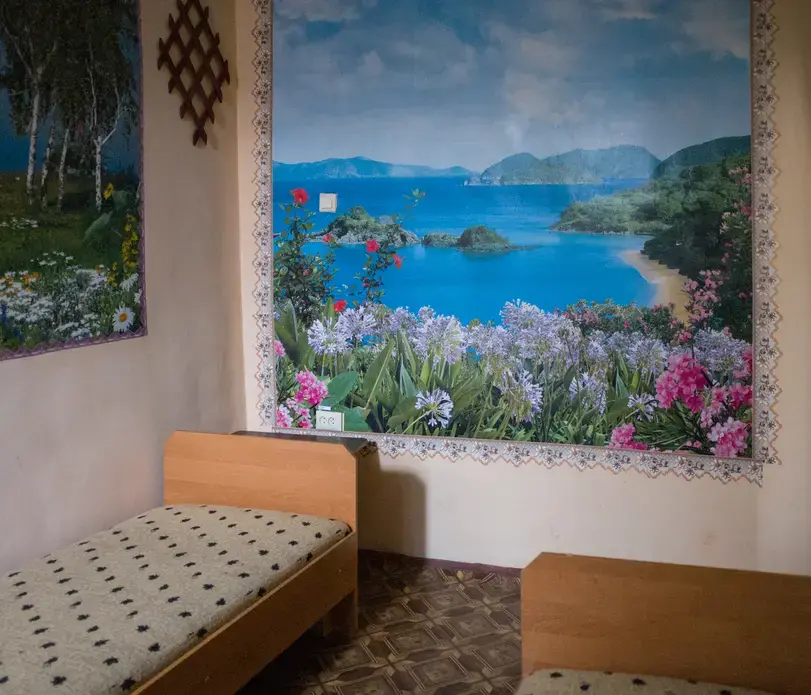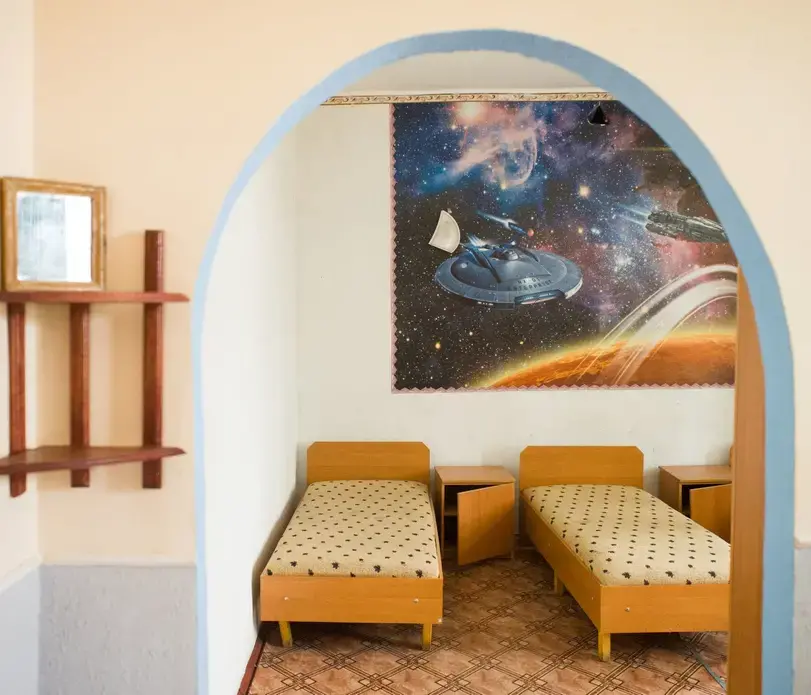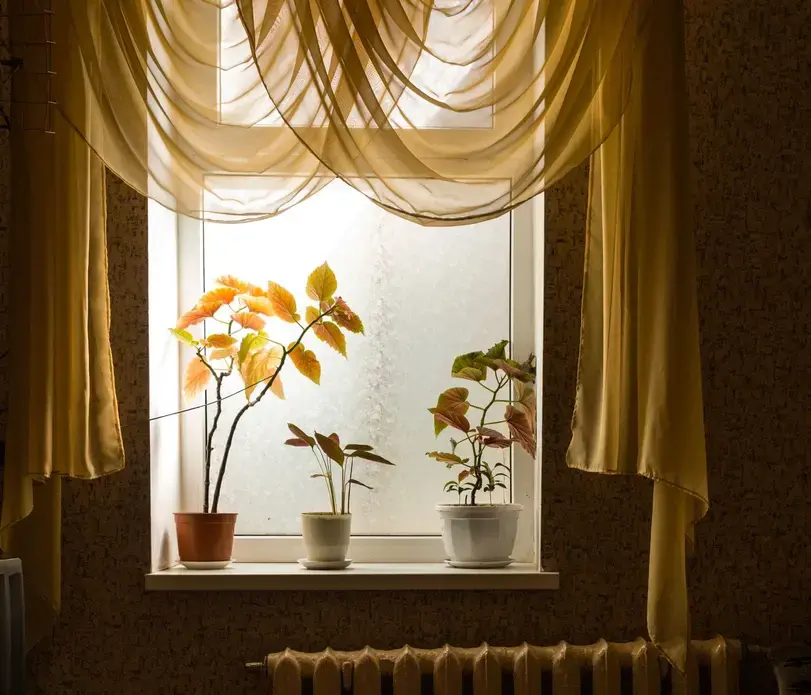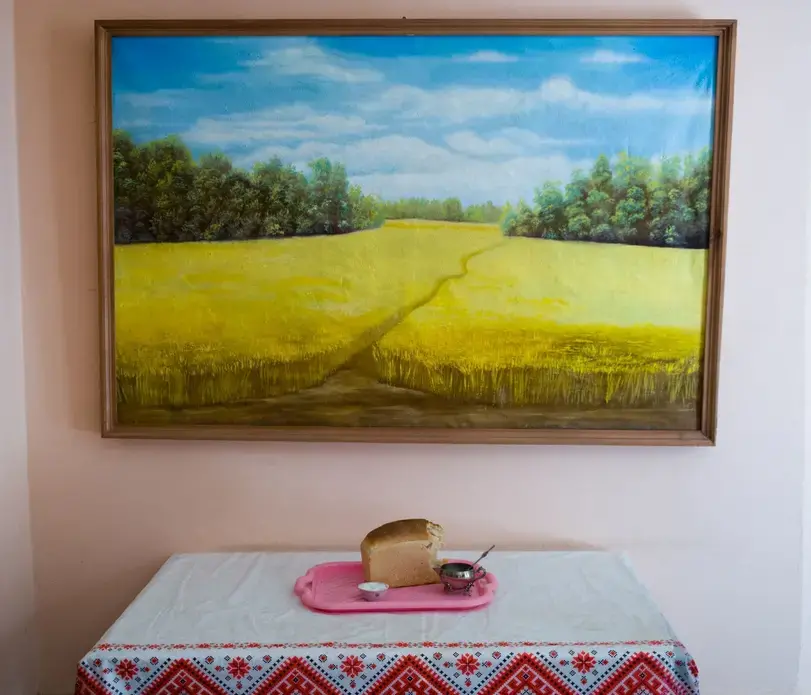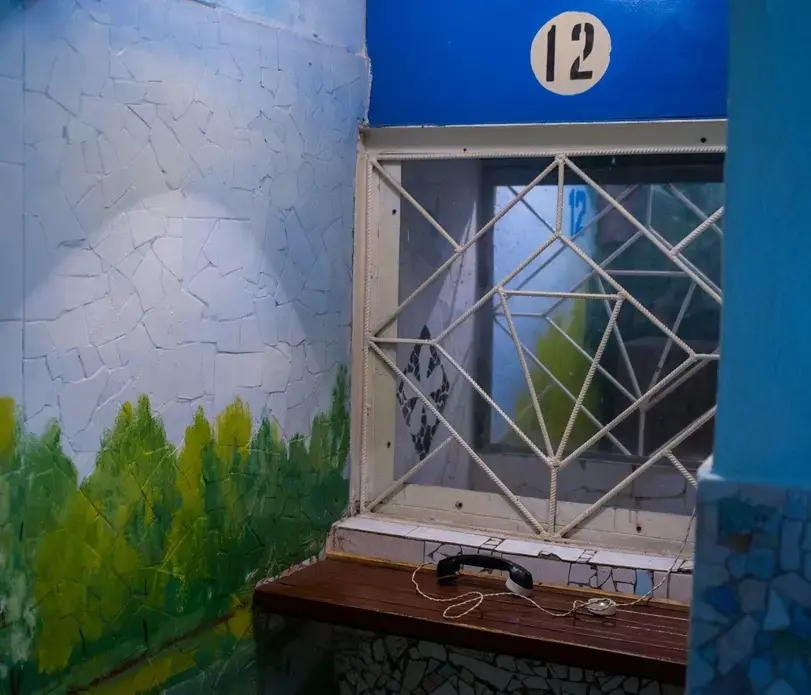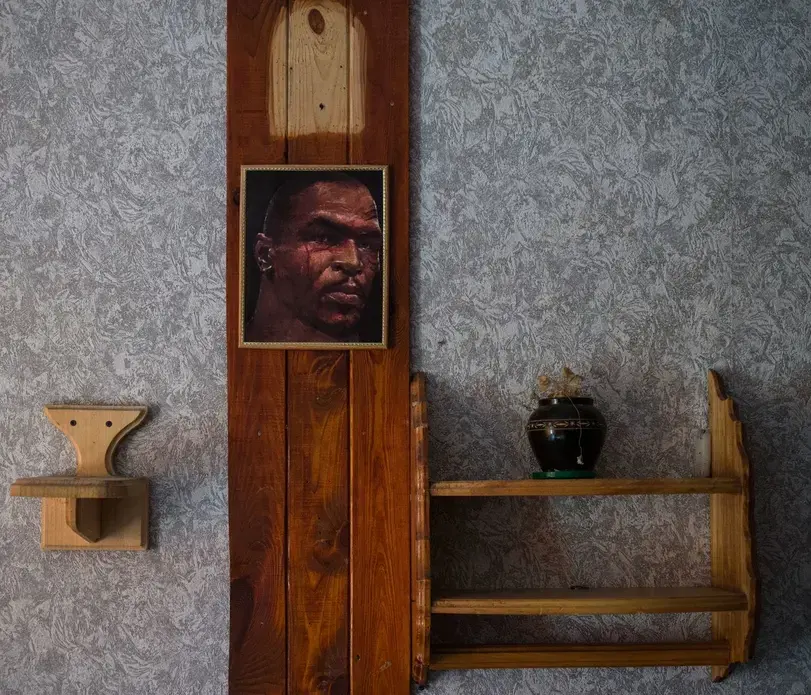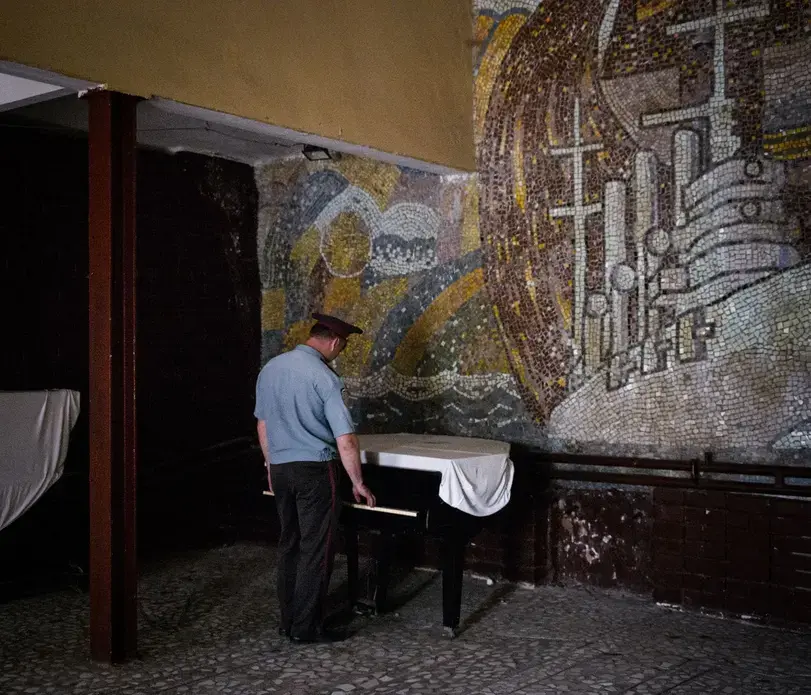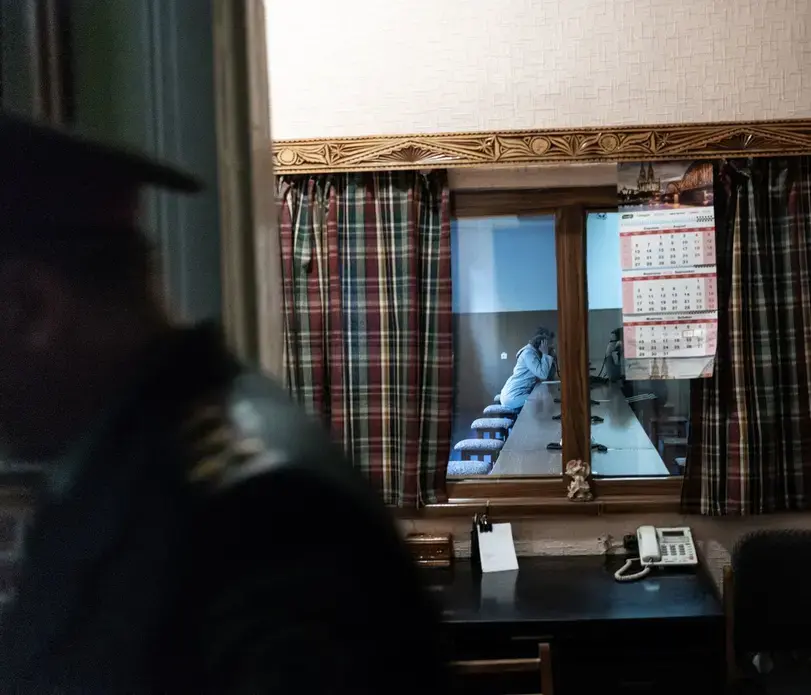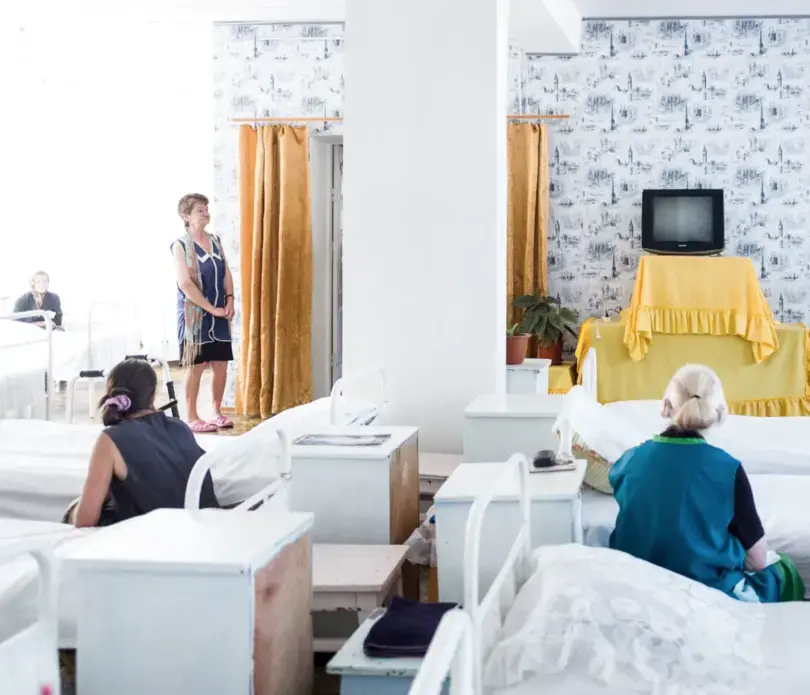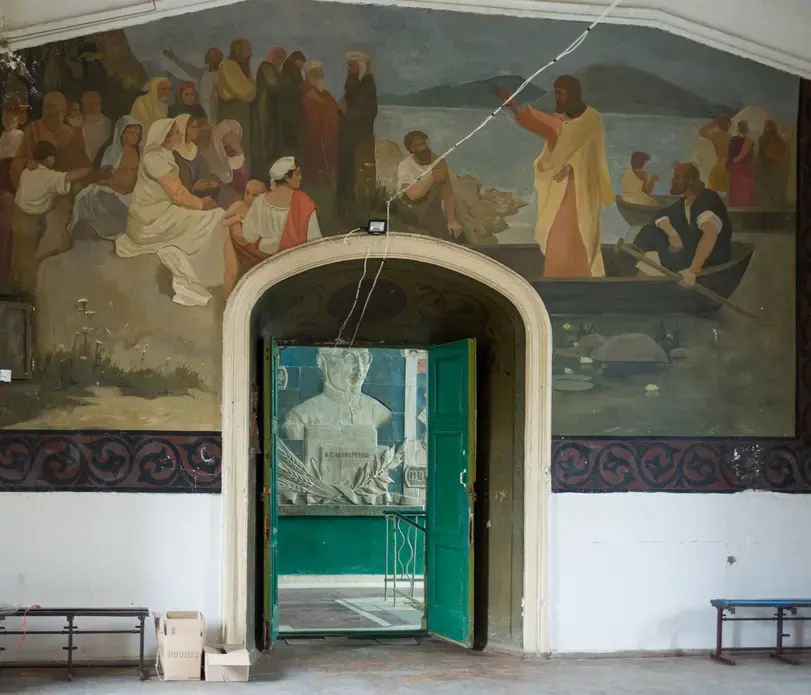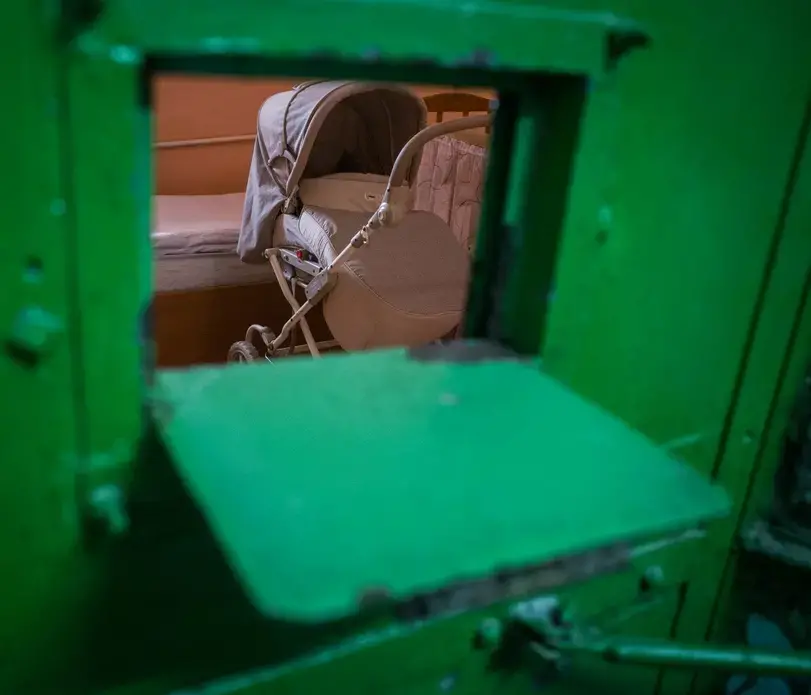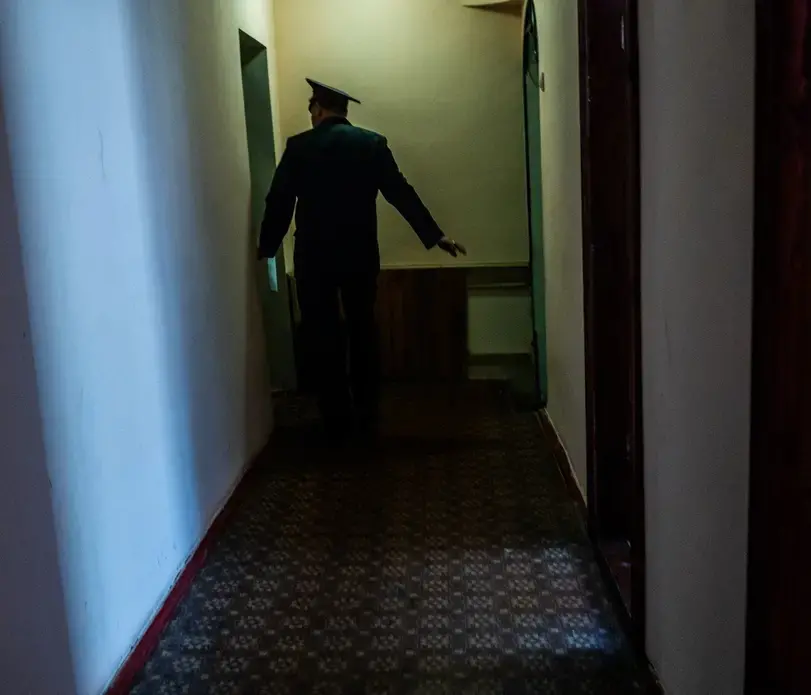KIEV, Ukraine—Photographer Misha Friedman says his study of Ukrainian prisons is about the traces that a society leaves behind. At the root of his work, though, are the people left behind.
For his latest project, Friedman, a veteran photographer in Eastern Europe, secured wide-ranging access to Ukraine's penal system—a labyrinth of post-Soviet human tragedy. But his photographs have almost no people in them. Instead, he trains the lens on prisons' layout and decor, arguing that those details tell the story of a society in flux.
"We always look at the people in photos, and we don't pay attention to what we leave behind," Friedman says. "It's like how the Neanderthals left drawings on the wall. I am searching for traces of Ukraine."
Those traces include Soviet-era mosaics and Americana kitsch. In one prison, a rounded outline on a wall hints at a religious icon that was taken down. Below it, next to a wilted potted plant, a gold-framed picture of the American boxer Mike Tyson still hangs.
The post-Soviet, the Western and the religious are three often-competing elements in a nation struggling to forge a path out of Moscow's shadow. As the intricate mosaics and monumental socialist architecture across Ukraine still attest, the country, with its engineering prowess and fertile soil, used to be a jewel in the Soviet empire. Nostalgia for simpler Communist times is still present among some older Ukrainians. But much of the younger generation and the middle class wants to join Western institutions such as the European Union, an urge that sparked a revolution in 2014 that toppled a Moscow-friendly president.
Five years later, a new presidential election looms on Sunday, with activists' dreams of an impartial judicial system taking on government corruption still unfulfilled. But the prison system has seen some changes, with the inmate population reduced by more than half. Friedman says reformers who joined the government after 2014 helped him gain access to the prisons—including to facilities that were shut down as the inmate population shrunk.
Friedman says he has been fascinated in particular by the spaces where prisoners interact with visitors. Cash-strapped prison wardens often try to add homey touches, such as papier-mâché fireplaces. Well-behaved inmates are allowed a three-day visit every two months, Friedman says.
But the homeyness is deceiving. The 200 inmates in one women's prison, Friedman was told, receive a total of only about seven overnight visits a month between them. Men, by contrast, appear to be visited much more frequently.
"In women's prisons, everything seems nicer—but that's the scary thing," Friedman says. "The women are being left behind. They're being abandoned in prison."



